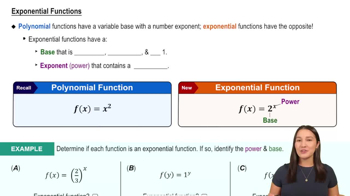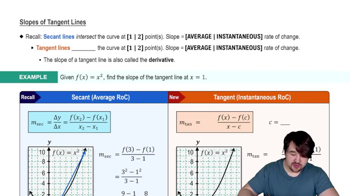Table of contents
- 0. Functions7h 52m
- Introduction to Functions16m
- Piecewise Functions10m
- Properties of Functions9m
- Common Functions1h 8m
- Transformations5m
- Combining Functions27m
- Exponent rules32m
- Exponential Functions28m
- Logarithmic Functions24m
- Properties of Logarithms34m
- Exponential & Logarithmic Equations35m
- Introduction to Trigonometric Functions38m
- Graphs of Trigonometric Functions44m
- Trigonometric Identities47m
- Inverse Trigonometric Functions48m
- 1. Limits and Continuity2h 2m
- 2. Intro to Derivatives1h 33m
- 3. Techniques of Differentiation3h 18m
- 4. Applications of Derivatives2h 38m
- 5. Graphical Applications of Derivatives6h 2m
- 6. Derivatives of Inverse, Exponential, & Logarithmic Functions2h 37m
- 7. Antiderivatives & Indefinite Integrals1h 26m
- 8. Definite Integrals4h 44m
- 9. Graphical Applications of Integrals2h 27m
- 10. Physics Applications of Integrals 2h 22m
1. Limits and Continuity
Finding Limits Algebraically
Problem 95a
Textbook Question
Sketch a graph of y=2^x and carefully draw three secant lines connecting the points P(0, 1) and Q(x,2^x), for x=−3,−2, and −1.
 Verified step by step guidance
Verified step by step guidance1
Step 1: Understand the function y=2^x. This is an exponential function where the base is 2. The graph of y=2^x is a curve that increases rapidly as x increases, and it passes through the point (0, 1) because 2^0 = 1.
Step 2: Plot the point P(0, 1) on the graph. This is a fixed point on the curve y=2^x.
Step 3: Calculate the y-values for the points Q(x, 2^x) when x = -3, -2, and -1. For x = -3, Q is (-3, 2^-3). For x = -2, Q is (-2, 2^-2). For x = -1, Q is (-1, 2^-1).
Step 4: Plot the points Q(-3, 2^-3), Q(-2, 2^-2), and Q(-1, 2^-1) on the graph. These points will be on the curve y=2^x.
Step 5: Draw secant lines connecting the point P(0, 1) to each of the points Q(-3, 2^-3), Q(-2, 2^-2), and Q(-1, 2^-1). These lines represent the average rate of change of the function between P and each Q.
 Verified video answer for a similar problem:
Verified video answer for a similar problem:This video solution was recommended by our tutors as helpful for the problem above
Video duration:
3mPlay a video:
Was this helpful?
Key Concepts
Here are the essential concepts you must grasp in order to answer the question correctly.
Exponential Functions
Exponential functions are mathematical expressions in the form y = a^x, where 'a' is a positive constant. In this case, y = 2^x represents an exponential function with a base of 2. These functions exhibit rapid growth as x increases and approach zero as x decreases, making them essential for understanding the behavior of the graph.
Recommended video:

Exponential Functions
Secant Lines
A secant line is a straight line that connects two points on a curve. In this context, the secant lines connect the fixed point P(0, 1) on the graph of y = 2^x to various points Q(x, 2^x) for specific values of x. The slope of the secant line provides an average rate of change of the function between the two points, which is crucial for analyzing the function's behavior.
Recommended video:

Slopes of Tangent Lines
Graphing Techniques
Graphing techniques involve plotting points and understanding the shape and behavior of functions on a coordinate plane. For y = 2^x, it is important to accurately plot points such as P(0, 1) and Q(x, 2^x) for x = -3, -2, and -1. This helps visualize the exponential growth and the relationship between the points and the secant lines drawn between them.
Recommended video:

Graphing The Derivative

 5:21m
5:21mWatch next
Master Finding Limits by Direct Substitution with a bite sized video explanation from Callie
Start learningRelated Videos
Related Practice







